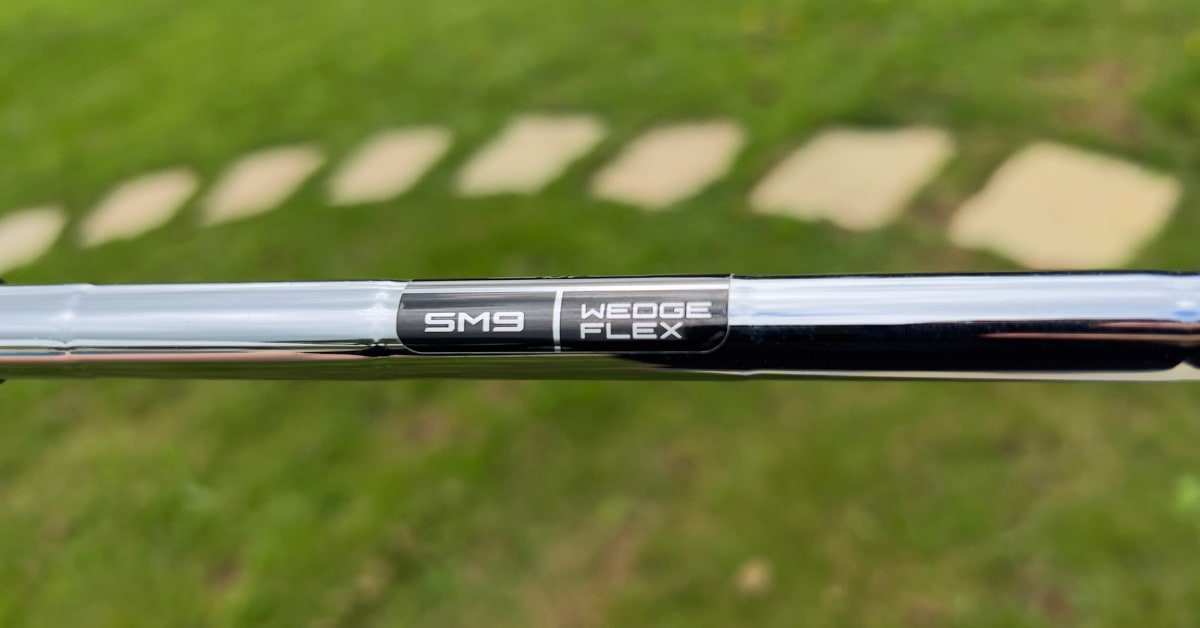My playing partner recently asked me — what is wedge flex?
After I explained the features of the shaft, he questioned if he should give them a swing. He’s generally easily influenced by the online golf fraternity, so I often talk him out of tweaking his equipment. However, this time, I encouraged it.
In this post, I explain what wedge flex is and how it compares to regular flex.
I’ll also reveal which wedge shaft is best suited to high, moderate, and slow swing speeds, and the best option to improve spin and launch for the average golfer.
Let’s get into it!
What Is Wedge Flex?
A wedge flex shaft is equivalent to a stiff flex design. These shafts are typically heavier than stiff or regular shafts to enhance feel, feedback, and control on pitching, gap, lob, and sand wedge shots. In my experience, wedge flex shafts further aid spin rate and clubface control into contact.
So, how exactly does it differ from other shaft options? Read on to find out!
Wedge Flex vs Regular Flex
Wedge flex and regular flex shafts differ in weight, torque, and flexibility, making them suited to different swing speeds and launch preferences.
Keep reading to learn how these wedge flexes impact your performance.
Shaft Flexibility
The main difference between the two shafts is the level of flex delivered.
A regular flex produces a higher degree of flexibility into impact, boosting energy transfer for clean contact and consistent spin.
Conversely, a wedge flex shaft boasts increased shaft stiffness. This keeps the shaft rigid throughout the swing, allowing for improved control.
Bill Lange from True Temper explains that a wedge flex shaft is akin to a stiff shaft suiting moderate to faster swing speeds:
True Temper’s Keenan Phillips believes there’s no right or wrong shaft flex choice.
For instance, 40% of professionals on the PGA Tour play the same flex in their irons and wedges. The other 60% opt for a softer and more flexible wedge shaft.
Weight
Importantly, wedge flex steel shafts are heavier than regular flex shafts.
Some players find that increasing the weight of the club enhances feel and feedback for optimal short game control. However, increasing the weight of your shaft can slow your transition and tempo, leading to an inconsistent strike.
For context, Tiger Woods swings a stiff wedge flex and extra stiff iron shafts to enhance his feel and control. His wedge shafts are around 2 grams heavier than his iron shafts to boost feedback on short wedge shots around the green.
I was shocked at the difference when I compared the weight of the Dynamic Gold Spinner wedge flex and the regular Dynamic Gold 120. The latter shaft is 12 grams lighter in a regular flex than the wedge flex spinner shaft.
In my experience, the lighter and more flexible a shaft is, the easier it is to release for slower swing speeds. I felt the wedge flex is slightly more challenging to get the clubface into position at impact, leading to inconsistent strikes.
PRO TIP: This rule differs slightly with a graphite shaft wedge flex for your pitching, gap, sand, or lob wedge. I’ve found graphite wedge flex options as light as a regular flex. Check the weight specs when researching potential wedge shaft options.

Torque
Regular flex shafts have more torque, making them less resistant to twisting.
This suits slow and moderate swing speeds who need all the assistance one can get to strike the ball cleanly. Conversely, wedge flex shafts carry a lower degree of torque, making them more stable at impact.
Stability into contact is the issue my playing partner has dealt with for years. He originally purchased his wedges off the shelf, fitted with regular flex Dynamic Golf Mid 115 R300 shafts. Although suitable for many golfers, my buddy is 6’ 5” and swings and transitions faster than most mid and high-handicappers.
His speed and transition meant the flex and torque in a regular setup were impossible for him to control. He couldn’t square the clubface at contact on full shots and used to slice a large percentage of chip and pitch shots.
After he switched to wedge flex sand, lob, and gap wedge shafts, he started striking the ball more consistently. One reason stems from the stability of the clubface and his ability to find the sweet spot.

Launch
The launch profile of both wedge and regular flex shafts varies depending on the kick point of the shaft.
PRO TIP: The “kick point” is where the shaft bends.
Lower kick points promote a towering launch, while a higher kick point reduces your trajectory. Despite the variation, I’ve experienced a higher launch on average when swinging a regular flex.
Kick point aside, I feel the increased flex and torque on a regular flex shaft boosts energy transfer for optimal compression on all strikes.
This sends my ball higher into the sky on full sand, gap, and pitching wedge strikes compared to the stiffer, heavier wedge flex.
Swing Speed
Your swing speed offers a helpful guide for your ideal wedge shaft flex.
As I mentioned, my playing partner is a higher swing speed golfer who has struggled to control a regular flex shaft. However, since switching to the stability of a wedge flex staff, he’s enjoyed a greater degree of success.
Conversely, a slow or moderate swinger may struggle to unload a stiff wedge flex golf shaft consistently. This leads to inconsistent ball striking, a loss of energy transfer, friction, spin rate, and overall club performance.

FAQs
Does Flex on Wedges Matter?
Yes, if you’ve been to a club fitting you’ll know that flex matters on wedges.
Specifically, it impacts the consistency of your swing speed, strike consistency, spin rate, launch angle, accuracy, and control.
Playing a flex that is too stiff for your swing prevents you from transitioning from the top of the swing and boosting energy transfer and friction for optimal spin.
What Happens if a Wedge is Too Stiff?
If your wedge shaft is too stiff for your swing speed, you’ll struggle to transition from the top and enhance energy transfer into contact.
This prompts a weak strike, leading to a loss of ball speed, friction, and spin, relinquishing your control around the green.
Do Pros Use Stiff Shafts on Wedges?
Yes, most pros use stiff or wedge flex shafts on wedges to maximize feel, feedback, and control around the green.
True Temper explains that 60% of tour pros who play an extra stiff iron shaft will also use a stiff wedge shaft.
For instance, according to True Fit Clubs, Cameron Smith plays the same KBS Tour 130X shaft in his irons and all of his wedges. Similarly, Jessica Korda plays the True Temper Dynamic Golf 105 S shafts in her irons and wedges.
While there are several differences between irons and wedges, having the same shafts can bring a sense of consistency, reliability, and familiarity.


